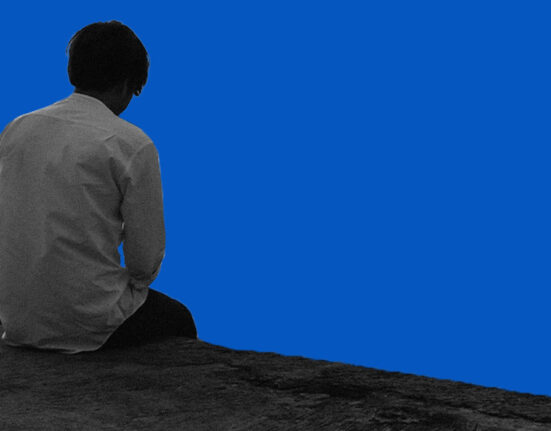Maslow suggested that human wants might be arranged in a ordering to help us understand what drives people. This ranking goes from further introductory demands like food and water to further profound ideas like self- fulfillment. Maslow states that our attention shifts to the succeeding need on the scale when a lower need is satisfied. Maslow maintained that before a person can satisfy their advanced wants, their survival conditions must be met. Because of the environmental and interpersonal challenges that necessarily irritate us, meeting the conditions linked with a advanced position of the scale is more demanding. Let’s explore the profound concept of Human Love and Belongingness within the Hierarchy of Needs, as elucidated by Abraham Maslow.
Decreasingly, higher conditions are psychological and long- term in nature as opposed to physiological and immediate, as are lower requirements related to survival. Maslow classified human requirements into five orders self- actualization, esteem, love, safety, and physiological. Even if more recent studies put doubt on some aspects of Maslow’s theory, his work has influenced other psychologists and advanced the area of positive psychology.
Also Read: Psychology Behind Emotional Needs
Physiological Needs
The demands for survival are included in the physiological requirements. Physiological requirements include effects like food and water. The Inhalation and homeostasis physiological demands include clothes and shelter in addition to the essential necessities of food, air, and temperature regulation. Since sexual reproduction is vital to the survival and spread of the species, Maslow also put it in this level of the ordering.
Security and safety
A little increase in complexity is seen in the requirements at the second level of Maslow’s scale. At this point, safety and security conditions take priority. People desire order and control in their life. Among the fundamental conditions for safety and security are:
- Structural stability
- Well- being and health
- Security from mishaps and harm
Actions driven by security and safety demands include looking for work, getting health insurance and receiving medical care, funding a savings account, and relocating to a safer area.
Social needs
Maslow’s scale of conditions lists love, acceptance, and belonging as social requirements. mortal conduct is driven at this position by the need for emotional connections. Among the particulars that fulfill this demand are:
- Bonds with friends
- Attachments that are romantic
- ties within the family
- Community and social clubs;
- Churches and other places of worship;
People need to feel loved and accepted by others in order to help loneliness, sadness, and anxiety. Particular relations with family, friends, and lovers are vital, as is participation in groups, including book clubs, sports teams, religious associations, and other social gathering places.
Also Read: The Reasons Why Psychiatry Needs Anthropologists
Self- Esteem needs
Maslow’s scale places the desire for regard and respect at position four. As soon as the demands at the smallest three situations are met, the regard needs take center stage in driving behavior. At this point, winning other people’s a love and respect becomes more vital. People have a need to accomplish goals and also be acknowledged for their efforts. Esteem needs encompass effects like tone- worth and self- esteem in addition to the need for passions of achievement and status.
Individualities need to feel that they’re contributing to society and that other people value them. Fulfilling the esteem needs can involve engaging in professional conditioning, achieving academic goals, sharing in sports or teams, and engaging in particular interests.
Individuals who are suitable to meet their conditions for regard by being recognized by others and feeling good about themselves generally have a strong sense of self- worth. On the other hand, low self- esteem and a lack of respect from others can lead to passions of inferiority.
Self- actualization needs
Maslow’s scale places the requirements for self- actualization at the top. People who are self- actualizing are self-aware, concentrated on their own development, indifferent to other people’s opinions, and eager to reach their full potential.
“ What a man can be, he must be, ” Maslow said, developing on the human drive to realize one’s topmost potential. When it comes to self- actualization, Maslow stated that it can be broadly defined as making the utmost of one’s capacities, potential, and other means. These individualities appear to be living their lives to the fullest and making the utmost of their capacities. These individualities have reached their maximum eventuality and continue to do so.
Also Read: Facilitating the Needs of Persons With Disabilities
Progressing Through the Pyramid of requirements
Pyramids are a common way to represent Maslow’s scale of conditions. The most fundamental conditions are set up at the base of the need aggregate, while the most complicated demands are set up at the peak.
People can do to the coming position of demands once their lower- position wants have been satisfied. Psychological and social requirements increase as people go up the aggregate.
The need for self- worth and a sense of achievement is ranked topmost on the pyramid. Similar to Carl Rogers, Maslow placed a strong emphasis on the concept of self- actualization — the process of evolving personally in order to realize one’s own eventuality.
Different Types of requirements
Deficiency requirements and growth conditions are the two orders into which Maslow’s scale of requirements can be divided.
- Deficiency requirements are the conditions that affect from deprivation and include physiological, security, social, and regard requirements. It’s critical to satisfy these baser wants in order to help negative feelings or issues.
- Maslow referred to the wants at the apex of the aggregate as “ growth requirements. ” These wants are a result of a desire to develop personally rather than a lack of anything.
Also Read: Optimism and Resilience In Parents Of Children With Special Needs
Impact of Maslow’s Hierarchy
Despite these objections, Maslow’s scale of requirements was a crucial element of a significant psychological revolution. Maslow’s humanistic psychology placed further emphasis on the development of healthy individualities than it did on deviant behavior and growth.
Although there is n’t important evidence to back up Maslow’s theory, the scale of requirements is extensively accepted in and outside of psychology. And University of Illinois experimenters set out to test this order in a 2011 study that was published.
These findings imply that, despite their potential to be strong behavioral motivators, these requirements may not always adopt the hierarchical structure that Maslow originally proposed.
Criticisms of Maslow’s Theory
Maslow’s hypothesis has gained enormous traction in and outside of psychology. The theory has had a significant impact on the domains of business and education. Maslow’s theory has not, however, been exempt from criticism. The main persistent objections are:
- Necessities are not ranked: Although a small amount of research has supported Maslow’s hypotheses, the majority of studies has not been able to provide evidence for the existence of a needs hierarchy.
- The hypothesis is challenging to test: According to some opponents of Maslow’s theory, it is challenging to conduct a scientific test of his notion of self-actualization. Six Additionally, Maslow’s research on self-actualization was based on a relatively small sample of people, which included both people he knew personally and biographies of well-known persons who he felt to be self-actualized.
References+
Hopper, E. (2020, February 24). Maslow’s Hierarchy of Needs Explained. ThoughtCo. https://www.thoughtco.com/maslows-hierarchy-of-needs-4582571#:~:text=According%20to%20Maslow%2C%20we%20have,sufficiently%20satisfied%20the%20previous%20need
Mcleod, S., PhD. (2024). Maslow’s hierarchy of needs. Simply Psychology. https://www.simplypsychology.org/maslow.html
MSEd, K. C. (2022, August 14). Maslow’s Hierarchy of Needs. Verywell Mind. https://www.verywellmind.com/what-is-maslows-hierarchy-of-needs-4136760













Leave feedback about this